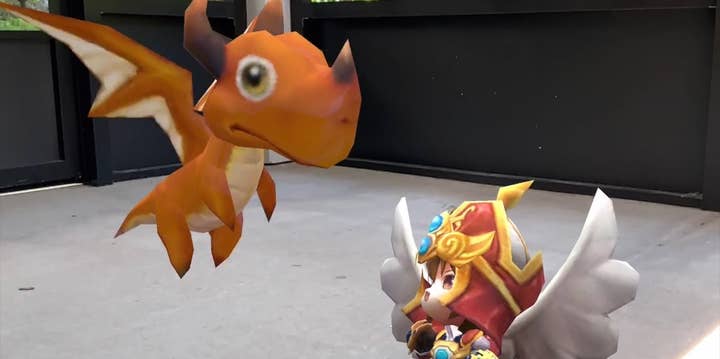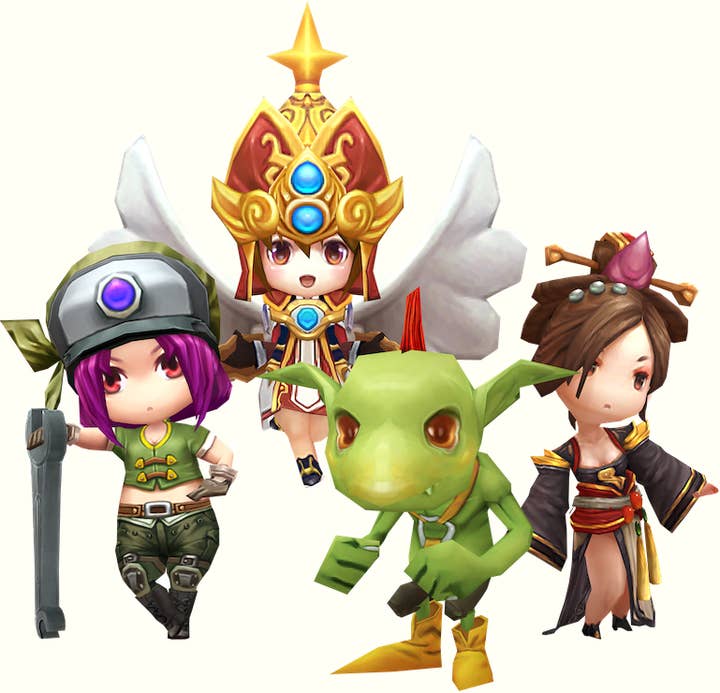"Just ship it": Tips for game development on a budget
At Nordic Game, Patch & Path's Ian Lotinsky gave advice on how to launch an indie game on schedule and on a shoestring budget
Game development is a tiring craft. It requires time, energy and money -- and indie game developers rarely have all three at once.
That was exactly the conundrum of executive producer, writer, and game designer Ian Lotinsky when he and co-producer and software engineer Jason RT Bond started working on their passion project under the name Patch & Path, while still maintaining their day jobs.
AR mobile game Farhaven, released earlier this year, was the result of their collaboration. And in a Nordic Game talk last week, Lotinsky was keen to share his advice on how to launch a quality game on a shoestring budget and on schedule.
"This is how we game developers see ourselves: we are artists, our art is an extension of who we are and it's our expression of ourselves. But this is what we actually are: broke"
"This talk was crafted to help you identify new ways to shave time off your production schedule as well as save you cash," Lotinsky started. "These techniques were instrumental in the creation of Farhaven.
"This is how we game developers see ourselves: we are artists, our art is an extension of who we are and it's our expression of ourselves. We painstakingly craft every corner of our products. But this is what we actually are: broke. Short on time and short on money. This realisation during the production of Farhaven got me wondering: how can I turn these liabilities into assets?"
Lotinsky's tips may be particularly useful for anyone trying to get a project finished and released in a short amount of time, for example to build up a portfolio, or simply to prove yourself that you can.
Embrace time and technical constraints
Lotinsky's first piece of advice came from two books he recommended: "Getting Things Done" by David Allen, and "Just F#*!ing Ship" by Amy Hoy.
Both writers develop the same idea that time constraints should be embraced as a way to prevent yourself from tweaking and polishing your project forever and never releasing it.
"David Allen explains that information work has no physical boundaries -- like agriculture or industry," Lotinsky said. "You can tune your work infinitely in the information age, if you're not careful enough. Amy Hoy takes us even further by suggesting in her book that creators work to get to the finish line as fast as humanly possible, and then circle back and fill in the details until things are just good enough."

It's not only time constraints that need to be embraced if you want your game released; it's also technical constraints. For this piece of advice, Lotinsky was inspired by a GDC 2013 postmortem from Robyn Miller on the making of Myst.
"Miller talks about how he and his brother embraced the technical constraints of CD-ROMs, and how they laid out the levels for Myst," Lotinsky said. "Instead of spending tons of time and money trying to work around technical limitations, they instead decided to change their game to adapt to those limitations.
"In Farhaven, that meant fully understanding and embracing the limitations in ARkit and the current state of augmented reality -- even though it wasn't what we wanted it to be. We adjusted our layout engine for objects and characters to adapt ARkit rather than contort ARkit to the real world."
Play and test on your targeted platform quickly
Lotinsky's next time-saving tip originally came from Mike Cowden, the creator of iOS and Android platformer Super 80s World.

"His tip was straightforward and profound: don't spend too much time game testing in Unity," he said. "Instead, build to device as soon as possible and experience the game on the end device the players will be playing on.
"This saved us countless hours as we realised limitations with ARkit and the real physical world. I took Mike's sound advice even farther: knowing that we would be targeting Apple devices, I read Apple's Human Interface Guidelines and changed the game design to accommodate the restrictions that I knew we would be held accountable to."
Make the most of asset stores
Whichever game engine you choose, as we largely covered on the GamesIndustry.biz Academy, you're likely going to have access to a large selection of assets you can choose from. If you plan on developing a game on a budget, you should fully take advantage of what the assets store has to offer.
"Knowing asset creation would cost us a lot of time and a lot of money, we flipped things on their head," Lotinsky said. "Instead, we went through the entire Unity asset store in one day and favorited anything that could possibly relate to our game that made sense. When it came time to actually construct levels we decided to use the objects that we had access to and minimise the custom assets that we had to create."
"We went through the entire Unity asset store in one day and favorited anything that could possibly relate to our game that made sense"
The duo created a spreadsheet gathering all the assets they had found so they could easily find what they had downloaded and where it would be used in the finished game, which Lotinsky recommends doing to keep track of everything when it comes to constructing the actual levels.
And it's not only art assets that these stores offer, but also music and sound effects, in the case of Unity.
"And what we couldn't find in the asset store we were able to get from freesound.org," Lotinsky adds. "The Apple Music Desktop Player was a fantastic tool to organise songs and sound effects. And of course, we reverted back to spreadsheets when it came time to organise them."
Don't be afraid to take shortcuts
Delivering a quality product doesn't mean you can't make things easier for yourself, with Lotinsky explaining that the duo put together a simple dust cloud animation to avoid having to do a more complex animation.
"We had a machine that had to transform from one shape to another and it just became easier to generate a dust cloud that covered up the transformation rather than animate the transformation itself," he said.
Similarly, the team saved a lot of time with batch processing, grouping things together by task rather than doing them one by one at different moments.
"Whether it was writing the scripts, processing the images for the inventory items or editing audio files, we found that if we bundled like-things together, we got an economy of scale and time, instead of just-in-time processing for each game component as we iteratively developed the game. It was just much better to do it in waves of batches."

Create an 'icebox'
As already touched upon, polishing and fine tuning until things are deemed perfect is often a reason for a project to be delayed. But if your goal is to stay on schedule, you need to accept that some things are just not going to get done.
"We played a trick on ourselves," Lotinsky said. "We created something we called the 'icebox' in our ticket tracker. In here, we placed features, bug fixes, design or user experience polish items that we really wanted to get to, but we knew weren't a part of getting to the finish line fast. We put them there so that we could someday get back to them, but knowing full well we never may.
"The book 'Getting Things Done' by David Allen calls this your 'someday maybe list'. It's a way to remove things from your mind to reduce cognitive load, and get back on task, and stay focused."
Trust the experts
While Farhaven was mostly developed by Lotinsky and Bond, they collaborated with experts in other fields when needed. Lotinsky explained that trusting the judgment of these people on the project was crucial in moving forward quickly.
"Having a different day job really created space to let things stew"
"One thing I learned was to trust the experts, whether it was voiceover artists doing one take or Jason being the software engineer but making some of the design decisions because of the engineering constraints we were running into... I just learned that it saved us a lot of time to trust people's instincts and their decisions from their vantage point rather than try to force them to do something arbitrary that came up in my head.
"Any collaboration we did was in tight iterations, we met regularly to discuss progress and blockers so we could make rapid decisions and move forward."
Let things stew
Finally, while you want to go fast and stay on schedule, it's important to let ideas and thoughts percolate to get to the right result.
"Having a different day job and having to work on this at night and on the weekends really created space to let things stew," Lotinsky said. "Whether I was grabbing lunch at home or driving to and from a coworking center, it gave me time to think about the decisions we were making or needed to make.
"It also gave me space for my subconscious to chew on problems we were facing or decisions that needed to be made and let them sink in -- and often my subconscious would come back with answers to problems we had. I think it was only possible because I embraced the fact that I had to pace the work rather than scream through it all at once.
"So how did it turn out? Well we ended up with a finished and released indie game project. We got it done on a budget that clocked in at half the cost of a typical indie game. And considering it was a part-time job for me and for Jason, we got it done in much less time than most completed projects that hit the store. And best of all: there are players who just absolutely love it."








